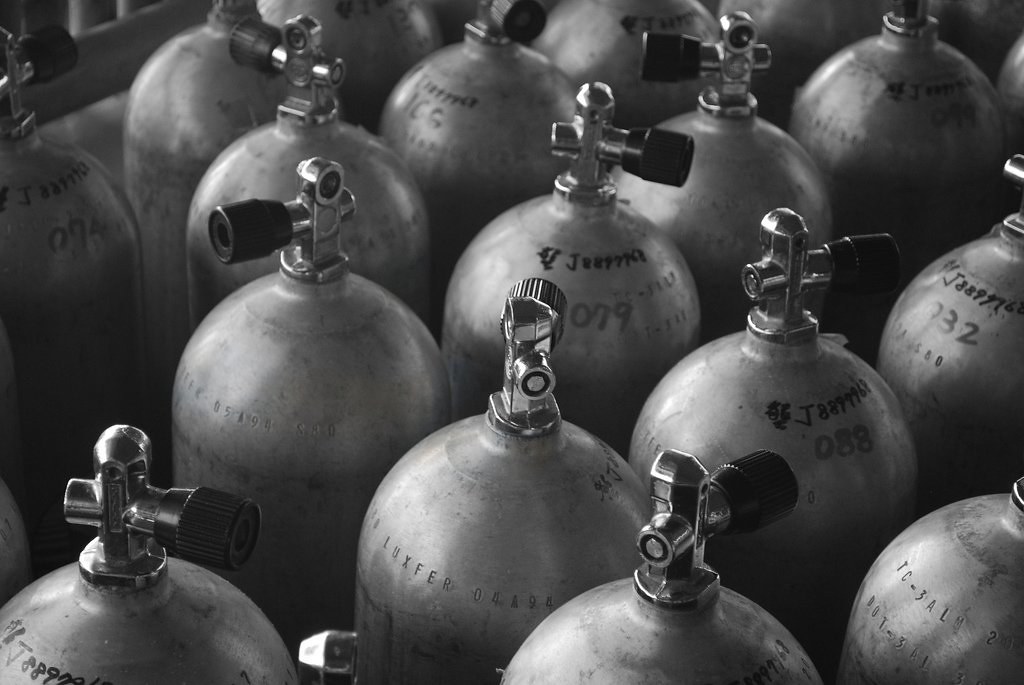RESCUE DIVING COURSE: HOW TO HANDLE SCUBA DIVING AIR PROBLEMS
In my rescue diving course, we learned five ways to not run out of air, and what to do if you do run out of air scuba diving:
 1: Check Your Gauge
1: Check Your Gauge
The easiest thing you can do to not run out of air is to check your gauge- well and often.
2: Calculate your Air Consumption
The formula to do this is: PSI used/actual bottom time x conversion factor = surface air consumption rate.
The chart above lists the conversion factors to help you calculate your air consumption. For example, on a 40-foot dive for 20 minutes, in which the diver uses 1500 psi, 1500 psi used divided by a 20-minute bottom time x 0.45 = 33.7 psi-per-minute surface rate. If you plan to dive to 100 feet, you can expect your gas consumption to be about 136 psi per minute (33.7 x 4.03 = 135.8). If your cylinder is filled to 3000 psi, you could expect it to last about 22 minutes (before allowing for your reserve).
3: Plan Your Air
When going down you should save air for the trip out, the trip back, ascent gas and also reserve gas in case you need an extra long safety stop or something unexpected happens during your dive
Take a three second long inhale, and 4 second long exhale
This is a great skill for staying calm and monitoring your air consumption. Taking deep breaths like this saves air and relaxes you underwater.
4: Keep your divemaster informed
When you get to 2000 PSI, 1500 PSI, 1000 PSI and especially 500 PSI, tell your divemaster. It’s crucial your guide knows what your PSI is so a safe dive can commence and end safely.
So, What happens if you do run out of air?
Tell your buddy! Signal you’re out of air by crossing your hand across your neck and grab their alternate air source if they don’t offer it to you already. Purge the tube and take a deep breath in. You are safe. Ascend Slowly.
If your buddy is too far away or doesn’t see you, it’s time to perform CESA (Controlled Emergency Swimming Ascent). Place one arm up and swim slower than your bubbles. DO NOT HOLD YOUR BREATH! Slowly exhale making a buzzing noise until you reach the surface. Try and inhale if you run out of breath, there may be a little more air left for you.
Dive Safely and do the rescue diving course with Hawaii Eco Divers today!
